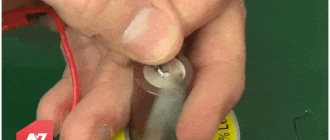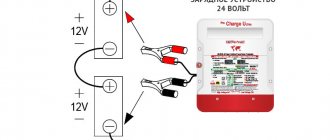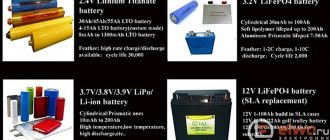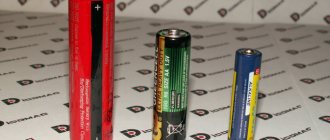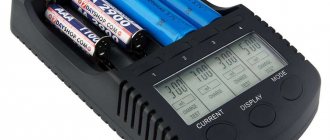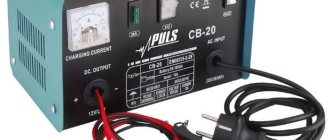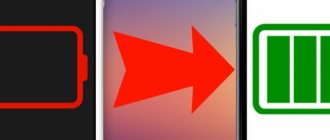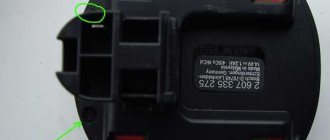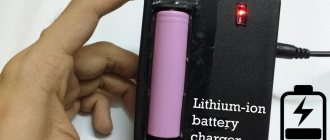When it comes to battery conversion 18650 (for a screwdriver with Ni-Cd/Ni-MH or a household storage device like Tesla Powerwall), then many manuals and instructions are silent about the methods of connecting batteries: soldering, welding or something else?
Not all connection options are suitable for durability and even safety. 18650.
Updated 02/04/2022. We propose to consider the correct and acceptable 18650 connection options with an emphasis on real-world consequences and engineering understanding of the processes. Thank you for your feedback in the comments here and on Ya.Zen—we have updated the article to reflect your experiences.
Expert opinion
It-Technology, Electrical power and electronics specialist
Ask questions to the “Specialist for modernization of energy generation systems”
18650 battery: Characteristics and How to charge The terminals of the container are soldered to the corresponding pads of the board, the load contacts are soldered to the adjacent pads, of course, through a switch, and the battery is inserted into the container. Ask, I'm in touch!
Serial and parallel connection of batteries
- 1. the mass of the tip is important, not its power and thermal conductivity;
- 2. soldering is performed with one quick (second) touch;
- 3. soldering stations on T12, T13 or 900m tips are not suitable (too long);
- 4. successful experience with POS-61 solder;
- 5. Nickel tape from Aliexpress is suitable for soldering 18650 (200 rubles);
- 6. From experience, you can use copper tape from old domestic contactors;
- 7. WOOD alloy is not recommended - cases of desoldering under load have been recorded in screwdrivers, but in laptops in general it “lives”;
- 8. The alloy soldering technique is not suitable for Rose even more so.
Soldering batteries
When assembling a battery of six elements, I first combined all the elements in pairs: the minuses of the two elements together and the pluses also together. Then I connected three pairs in series.
Now that the assembly of elements is ready, you need to connect the controller to it. Important!!! The controller is connected in the reverse order, that is, we start with the wires with the lowest potential and move upward: 0 V and 3.6 V, only then 7.2 V and finally 10.8 V.
Now all that remains is to carefully assemble the battery for testing. Without sealing the battery case, I connected it to the laptop and pressed the power button, but the laptop did not turn on and realized that when I disconnected the old battery assembly, the controller went into transport mode and disconnected the battery. I connected the mains power to the laptop, the laptop started up and saw a restored battery!
Is it possible to solder 18650 batteries?
It is forbidden ! This is the wrong approach. “ But if you’re very careful, it’s possible ,” is the approach in DIY communities. What is the catch, what should you be wary of?
When connecting 18650 batteries into a large battery (from laptops to vehicles), the task is to ensure reliable contact without losses, resistant to external influences (shock, temperature, and so on - depending on the purpose of application). Many lovers of DIY crafts consider soldering as one of the options.
Lithium-ion batteries (18650 and any other Li-Ion) when heated from a soldering station (or even a low-power soldering iron) are destroyed in their structure and irreversibly lose capacity!
That is, solder 18650 batteries unless absolutely necessary. Or you will have to put up with a change in chemical composition and deterioration in performance.
What kind of lighting do you prefer?
Built-in Chandelier
In addition, the solder connection is unreliable if the battery overheats. The method is also impractical for compact assembly due to random solder shapes and vulnerability to external influences.
Ideas and diagrams for DIY assembly
In order to make your own Power Bank, you will in any case need a charge controller and a converter that increases the voltage from 3.7 to 5 volts; there is very little room for creativity. However, there are several options for what to make the body out of. You can not only find it in an online store, but also convert it from a ready-made case from an unnecessary gadget. Or you can make a very beautiful, stylish case from wood yourself.
You can also use your imagination when choosing batteries. They can be obtained from faulty laptop batteries or old mobile phones. You can also use flashlight batteries.
What modules from China will we need?
To make a profitable Power Bank with your own hands, you can pick up cheap components, for example, on the Aliexpress website. Here's the basic information you need to choose a cheap, high-quality module.
The charging board must have protection against overcharging, short circuit, and overload. The device is assembled on the basis of a microcircuit and is needed in order to stop charging in time. The main characteristic of the charge board is the output current (it can be equal to 1 ampere), or there are devices with two outputs for 1 and 2 A. In addition, when choosing, you also need to pay attention to the type of batteries - usually most boards are designed for lithium-ion batteries 18650. Some models have digital displays that show the percentage of battery charge.
The batteries produce 3.5-3.7 volts, and a voltage of 5 V is required to charge a mobile gadget. Therefore, a boost converter is required for the charger. It can be in the form of a board to which you need to solder wires, or in the form of a board with a USB connector already installed (one or a pair). In the latter case, you will only need to solder the “+” and “-” wires from the battery to the “B+” and “B-” connectors (they can also be designated “Vin” or “input”). You can find this device in stores by searching for “boost converter for 3.7-5 volt power bank”, or simply “boost DC-DC converter”.
But there are boost converters with adjustable output voltage, in this case, before soldering it to the USB connector and connecting it to the phone, you need to measure the output voltage with a multimeter and set the required 5 volts.
Power bank for 18650 from a laptop battery
To assemble a power bank with your own hands from old laptop batteries you will need:
- charge module with overcharge protection;
- a converter that increases the voltage from 3.7 to 5 volts;
- frame;
- 18650 lithium-ion batteries;
- 100 µF capacitor, 16 V;
- USB connector;
- button to turn the device on and off;
- connecting wires.
Step-by-step assembly instructions:
- First you need to mark the case according to the dimensions of the components.
- Make holes according to the markings.
- Using soldering, connect the batteries used for the power bank in parallel (the soldering iron tip must be massive, and soldering must be done quickly so as not to damage the battery).
- Strengthen the battery structure with tape and install it in the case.
- Install the charge module into the housing.
- Solder the 18650 battery pack to the charge module.
- Install the boost converter by connecting it to the charge module via the power button.
If the boost converter board has USB connectors, the manufacture of the charger can be considered complete. If there is no such socket, it needs to be soldered. To do this, the positive and negative outputs of the converter board are soldered to the connector. To stabilize the charging current, you can solder a capacitor with a capacity of 100 microfarads, designed for a voltage of 16 volts, between the positive and negative outputs of the connector.
Attention! Lithium-ion batteries do not tolerate high temperatures well, so when soldering you need to work with a powerful soldering iron for a short period of time.
Power bank made from phone batteries
Many people have some unnecessary mobile phones from which they can get batteries. When using several devices from phones, keep in mind that the batteries must be of the same capacity, and in other respects they must be similar to each other.
Expert opinion
Alexey Bartosh
Specialist in repair and maintenance of electrical equipment and industrial electronics.
Ask a Question
Important! The capacity of a power bank is affected by the number of batteries used: the more batteries there are, the more energy can be stored. The recommended capacity of a homemade Power Bank is from 6,000 to 20,000 mAh.
The procedure for assembling a homemade Power Bank is the same as when using a laptop battery.
Power bank made from batteries
For the simplest homemade power bank of four AA batteries you will need:
- nickel cadmium batteries;
- USB connector (can be taken from a broken gadget);
- a can of used air freshener;
- two matchboxes;
- film packaging;
- connecting wires;
- staples;
- a jar of vitamins.
Manufacturing procedure:
- We bend one of the walls of each of the two matchboxes (shown in the photo). Then we glue the boxes together and install the batteries in them.
Batteries in matchboxes
- On the back of the matchbox we make electrical contacts from staples. After this, we connect the staples with wire.
- We install the resulting product in a film box. We check the voltage at the battery output: it should be slightly more than 5 volts.
- We cut off the bottom of the vitamin packaging and make a hole in it for the USB connector. We insert the USB connector and solder the wire to it to which the batteries are connected.
- We insert our design into the air freshener can, then close it.
Now you can test the resulting design in action.
Peculiarities
When considering how to charge an 18650 battery for a flashlight, electronic cigarette and other devices, it is necessary to describe the principle of its operation. The presented standard size is available in the lithium-ion battery category. It has small dimensions. The height is only 65 mm and the diameter is 18 mm.
Inside the device there are metal electrodes between which lithium ions circulate. This allows the generation of electric current to power equipment. When the charge is low or high, more ions are formed on one of the electrodes. They grow on the material, changing its volume and characteristics.
In order for the battery to work long and fully, it is necessary to prevent the appearance of a deep or too high charge. Otherwise, the device will quickly fail. Depending on the battery ratings, special types of chargers are used.
Is it possible to solder 18650 batteries? What is the best way to connect them?
Write about your own experience of soldering 18650 in the comments or send a message to us on VKontakte @NeovoltRu.
Expert opinion
It-Technology, Electrical power and electronics specialist
Ask questions to the “Specialist for modernization of energy generation systems”
Rules for serial and parallel connection of batteries Chargers are quite sufficient, and most of them are equipped with indicators and a safety system that eliminates the need to constantly check the voltage or current level. Ask, I'm in touch!
A little about lithium-ion batteries
These include the following aspects:
- high density of output current and accumulated energy, long-term charge retention;
- no effect of capacity reduction due to regular incomplete charging;
- self-discharge no more than 4-8% per month when stored without recharging, aging no more than 15-20% per year;
- no need for a full discharge to train the energy capacity of the drive;
- light weight, variability of shape and dimensions of the device;
- operating temperature range – from -20°С to +50°С (low temperatures prevent recharging);
- long service life (up to 10 years of operation and more than 1000 discharge cycles).
The disadvantages of lithium batteries are:
- dependence of the service life on the duration of use and storage, and not on the number of discharge cycles;
- risk of failure during overcharging (current flow upon completion of charging);
- low resistance to deep discharge;
- high price;
- explosion hazard due to mechanical damage and excess current, if they lead to heating of the electrolyte and breaking the seal of the housing.
The name of the 18650 battery is due to its shape and dimensions. The battery width is 18 mm and the length is 65 mm. The last number in the marking indicates the cylindrical shape of the battery. The drive circuit is equipped with a controller that prevents overheating during charging.
The battery case can be marked in more detail: for example, INR18650-20R. The first letter distinguishes all lithium-type batteries, the second specifies the type of cathode material (C – cobalt, N – manganese, F – ferrophosphate).
The letter "R" stands for rechargeable. The next 5 digits reflect the dimensions and shape factor of the battery, and the last one is the battery capacity in Ah.
18650 batteries with a protection board can be labeled as 18700 or 18670. The protection board controller helps prevent the battery voltage from exceeding the rated voltage (4.2 V) and falling below 2.5 V.
Battery protection
Today, the types of batteries presented are available complete with a special controller or contain manganese. Previously, batteries were produced without protection. In this case, you needed to know how to charge an 18650 battery correctly for your own safety.
The fact is that a device that did not have special protection could overheat greatly if it was charged incorrectly or for too long. In this case, a short circuit and even a fire or explosion of the battery could occur. Today, the use of such structures has sunk into oblivion.
Introduction. Lithium batteries, characteristics, features.
Lithium batteries (Li-Io, Li-Po) are the most popular rechargeable sources of electrical energy at the moment. The lithium battery has a nominal voltage of 3.7 Volts, which is indicated on the case. However, a 100% charged battery has a voltage of 4.2 V, and a discharged one “to zero” has a voltage of 2.5 V. There is no point in discharging the battery below 3 V, firstly, it will deteriorate, and secondly, in the range from 3 to 2.5 It only supplies a couple of percent of energy to the battery. Thus, the operating voltage range is 3 – 4.2 Volts. You can watch my selection of tips for using and storing lithium batteries in this video
Alex2019-11-11T00:50:11+03:00
Series-parallel connection
Figure 6: Series-parallel connection of four elements (2S2P). This configuration provides maximum design flexibility. Parallel elements help in voltage control.
| Dual Purpose | Industrial Line | Premium Line |
| 10 – 12 years / 600 cycles | 10 – 12 years / 1200 cycles | 10 – 12 years / 1200 cycles |
| traction-starter | universal series based on unique Smart Carbon technology | |
Recommendations for using primary batteries
Keep element contacts clean. A four-element configuration has eight pins and each one adds resistance.
Never mix different types of elements; if one fails and there is no similar replacement for it, then everything must be replaced. Overall performance is only as good as its weakest element.
Observe polarity. An incorrectly placed element will reduce the overall system voltage.
To prevent electrolyte leakage and corrosion, remove cells from the device when not in use. This is especially true for carbon-zinc elements.
Do not store electric batteries in metal boxes. The elements should be placed separately in plastic bags to avoid short circuits. Do not carry batteries in your pockets.
Keep batteries away from children. In addition to the risk of inhalation, which can cause suffocation, the current from an electrochemical battery, if it enters the gastrointestinal tract, can cause ulcers, and if the casing ruptures, it can cause poisoning. ( See: Impact of electrochemical batteries on human health ).
| Dual Purpose | Industrial Line | Premium Line |
| 10 – 12 years / 600 cycles | 10 – 12 years / 1200 cycles | 10 – 12 years / 1200 cycles |
| traction-starter | universal series based on unique Smart Carbon technology | |
Expert opinion
It-Technology, Electrical power and electronics specialist
Ask questions to the “Specialist for modernization of energy generation systems”
How to charge 18650 battery correctly? By the way, this battery won its popular designation on the Internet thanks to its parameters: its diameter is 18 millimeters and its height is 65, which is quite convenient and compact, given its wide capabilities. Ask, I'm in touch!
How to charge lithium batteries?
And if we are talking about a disposable battery that is not intended for recharging, then the correct (and only correct) answer to this question is NO.
The fact is that any lithium battery (for example, the common CR2032 in the form of a flat tablet) is characterized by the presence of an internal passivating layer that covers the lithium anode. This layer prevents a chemical reaction between the anode and the electrolyte. And the supply of external current destroys the above protective layer, leading to damage to the battery.
By the way, if we talk about the non-rechargeable CR2032 battery, then the LIR2032, which is very similar to it, is already a full-fledged battery. It can and should be charged. Only its voltage is not 3, but 3.6V.
How to charge lithium batteries (be it a phone battery, 18650 or any other li-ion battery) was discussed at the beginning of the article.
Battery Installation Tips
- Check that the battery is properly secured in the car to prevent it from being dislodged or knocked;
- Accessories with high power consumption should only be connected to the top terminals, without using the side terminals;
- Replace cables and connections that have become corroded or mechanically damaged;
- Do not lift or move batteries using their output terminals.
Combination of serial and parallel connection
The combination of series and parallel battery connections provides greater flexibility in battery form. The required voltage and power are made possible using standard cells. High-voltage batteries require careful mating, especially under heavy loads or when operating in cold temperatures.
Expert opinion
It-Technology, Electrical power and electronics specialist
Ask questions to the “Specialist for modernization of energy generation systems”
How to charge and with what current If you connect several of these batteries using cases in parallel, the capacity will increase by as much as the number of batteries that are connected 3600 3 10800 mAh. Ask, I'm in touch!
What types of connections exist
The most commonly used series and parallel connections of batteries. There is also a third type, combined, or series-parallel.
Is it possible to connect batteries of different capacities?
Consistently - no. The fact is that internal resistance depends on capacitance. The larger the capacitance, the lower the resistance. A large voltage difference is formed in the assembly, and somewhere it can be much higher than the limit, and somewhere much lower. When you connect a charger, a battery with a smaller capacity will charge faster and there will be excess voltage on it, which will lead to damage and loss of capacity, while batteries with a larger capacity will not be fully charged.
When a load is connected, the opposite situation will occur: a small battery will discharge below the permissible limit (the so-called deep discharge), as a result losing part of its capacity.
IMPORTANT! You cannot connect batteries of different capacities, different types, or different degrees of charge in series. They should be as similar as possible, preferably from the same batch.
To the question of whether it is possible to connect batteries of different capacities in parallel, the answer is yes. But be careful. Make sure that the voltage at their terminals is equal. If it is very different, it may cause a short circuit or damage to the smaller battery. It is also worth considering that the terminals of a particular battery may not withstand too much current for a long time. See specifications before assembly.
How to properly connect 18650 batteries:
- Use batteries of the same manufacturer, type, service life;
- Since a parallel connection can increase the current consumption, you must ensure that the cross-section of the cables is sufficient to withstand it;
- Before installation, you must clean all contacts and use only reliable clamps;
- Check connections regularly.
Useful tips Connection diagrams Principles of operation of devices Main concepts Meters from Energomer Precautions Incandescent lamps Video instructions for the master Testing with a multimeter
